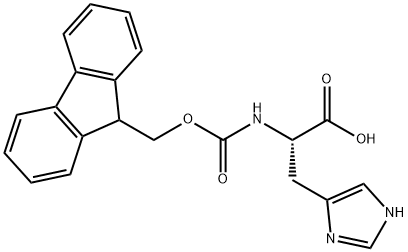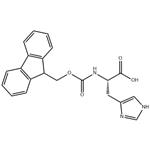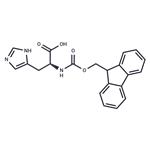Nα-Fmoc-L-histidine (FMOC-HIS-OH) holds great significance as a synthetic amino acid extensively employed in peptide synthesis. Its versatility makes it a highly sought-after reagent, widely used in various synthetic processes to create peptides, proteins, and even small molecules. Moreover, it catalyzes peptide and protein synthesis, further enhancing its utility. It is pivotal in unravelling biological processes such as enzymatic catalysis, protein structure, and drug design. Notably, this remarkable amino acid aids in understanding cell signalling pathways, which bear paramount importance in comprehending the mechanisms underlying diseases. The mechanism of action for Nα-Fmoc-L-histidine revolves around its ability to form essential peptide bonds. These bonds arise through a reaction with specific reagents, like DCC, leading to the creation of peptides. Subsequently, deprotection of the peptide bond occurs with the addition of a base, such as sodium hydroxide, followed by an acid, like trifluoroacetic acid.




